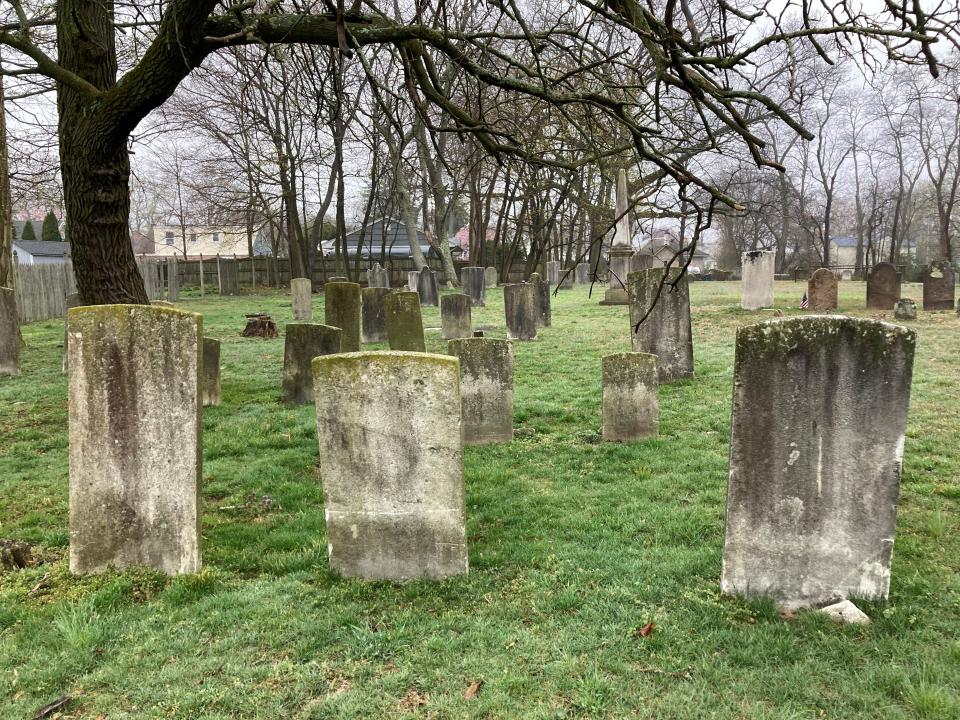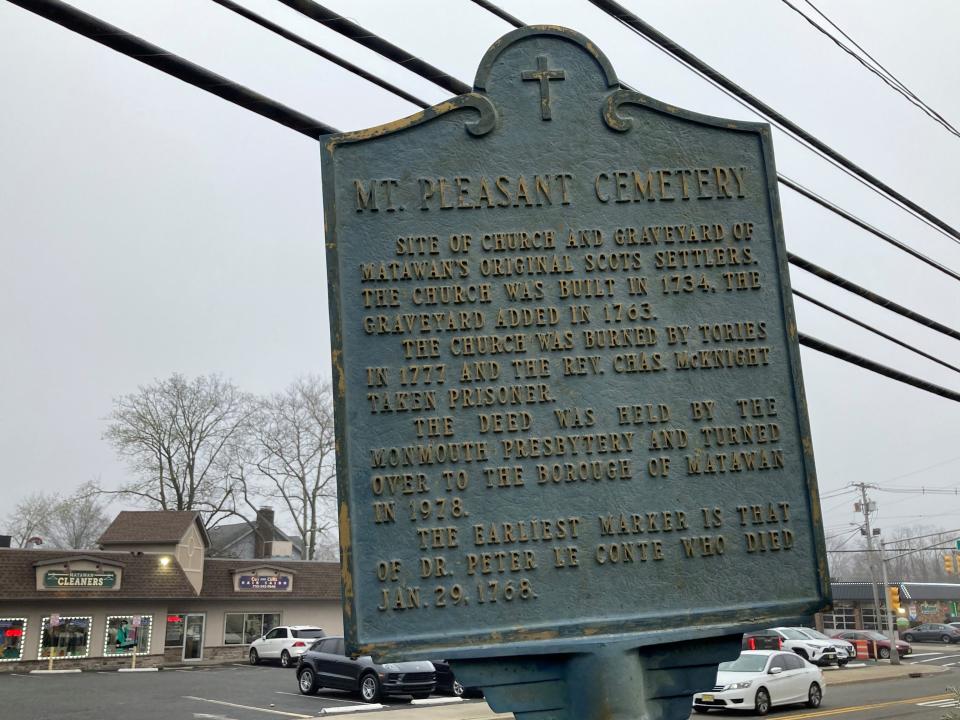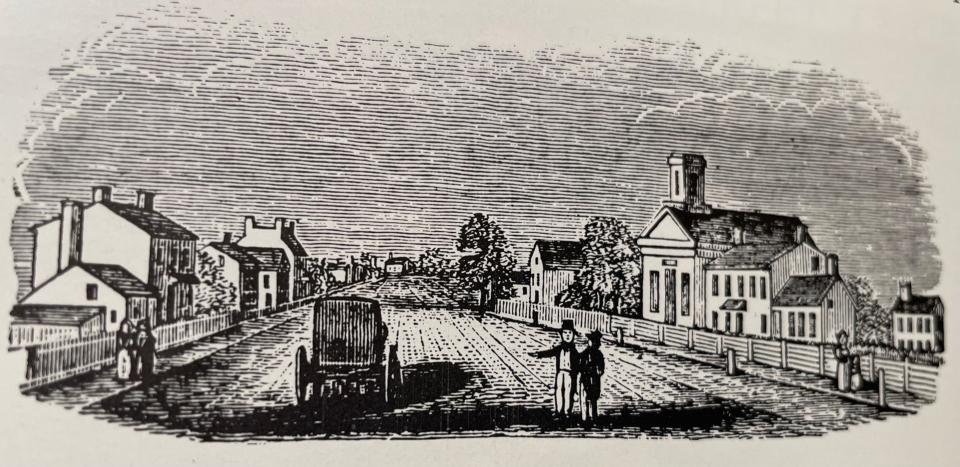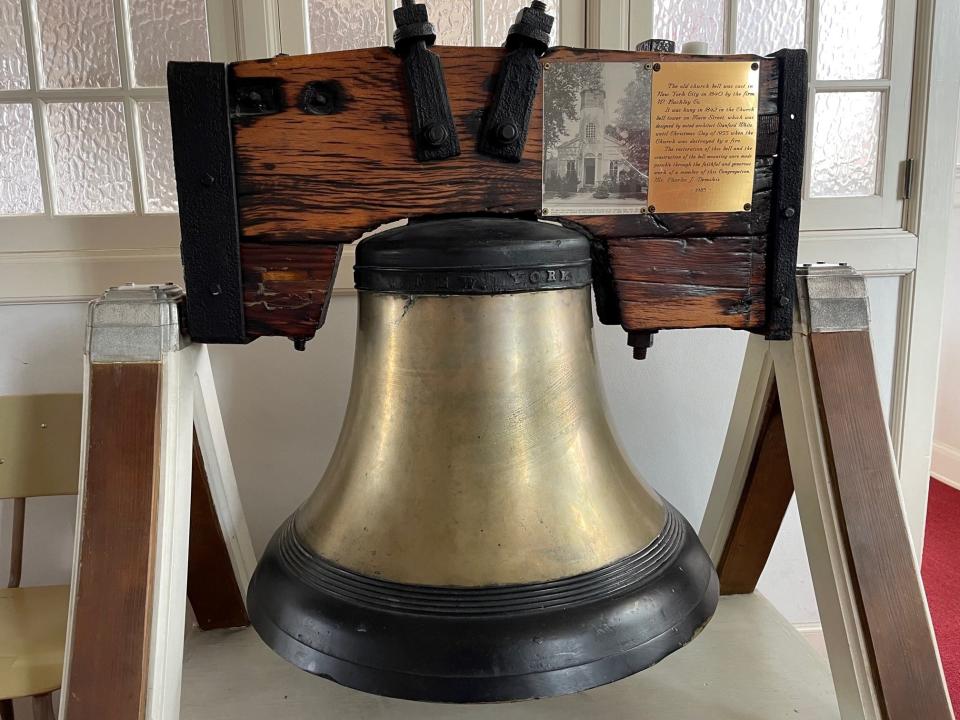Pastor in prison, church burned to the ground: See Revolutionary history in Matawan
MATAWAN - A 260-year-old graveyard lies at the intersection of Routes 79 and 516. Amid the crumbling, faded headstones at Mount Pleasant Cemetery, a historical marker bears a startling fact. On this site in 1777, British troops burned Matawan’s first and oldest church to the ground.
“Because of how crowded that intersection is, most people drive by it a thousand times and never even notice it,” Matawan historian Kurtis Roinestad said.
It’s worth noticing, because what took place here turned the Monmouth County Bayshore into a hotspot for Revolutionary War skirmishes. After torching First Presbyterian Church, the British threw its rebellious pastor, Rev. Charles McKnight, into a notorious makeshift prison in Manhattan, from which he eventually emerged all but dead.
That didn’t scare off the patriots. Quite the opposite. “It created more fervor for everyone,” Roinestad said.

Truth vs. tales: Captain Kidd, Blackbeard and buried pirate treasure at the Bayshore?
McKnight’s congregation is still going today, 338 years old and counting. The current pastor, Rev. Natalie Bell, isn’t preaching revolution from the pulpit. But she’ll draw on the spirit of the 1770s this Easter weekend and throughout the calendar.
“One of the main lessons is that we as Presbyterians believe in being very involved in our community and bringing light to our community,” she said. “Our church right now is used every single day and night as a place where people come together. We host addiction groups, scouting groups, community theater and choir.”
'My heart lifts': Battle of Monmouth painting saved from sale, new exhibits coming
It’s not quite bayonet-wielding skirmishes in the streets, but Roinestad will illustrate the parallels between then and now during a five-church historical tour by the Matawan Historical Society April 23.
“A study of the churches in Matawan is really the study of New Jersey,” he said, “and to a large extent the study of American independence in general.”
Witness to Appomattox: Black Civil War soldiers finally getting proper salute in Matawan

A deadly voyage
The first European settlers of Matawan arrived on the ship Henry and Francis, whose disastrous four-month passage across the Atlantic in 1685 killed a third of the passengers. Most were Scottish highlanders fleeing persecution by the Church of England. Many had been imprisoned for their faith and released as indentured servants to Lord George Scot, who intended to establish a colony in “East Jersey” with their labor. But Scot was among those who perished on the disease-ridden voyage, and when the ship finally docked on the Bayshore, the survivors found themselves unexpectedly, completely free.
Thus began the First Presbyterian Church. Nearly a century later, its suspicion of England’s crown animated McKnight, who spent a decade fomenting revolution from his pulpits in Matawan and Shrewsbury.
“His family basically got run out of Scotland,” said Jerry Godbehere, First Presbyterian’s church historian. “He had a strong bent toward freedom. He was really a thorn in the British side.”
Revolutionary history: 250-year-old founding father portrait rediscovered, brought home to Matawan
McKnight even enrolled in the Continental Army as a chaplain and fought in the 1777 Battle of Princeton, “where he got a saber wound to the head,” Godbehere said.
Incensed British loyalists summarily burned his church and tossed him in the clink. Accounts differ as to whether he rotted away in a converted “sugar house” jail or on a prison ship docked in New York Harbor — both were ridden with pestilence and death. But when McKnight was released on Jan. 1, 1778, he was a shell of a man.
“He was down to about 90 pounds because he had been treated so badly,” Godbehere said. “He died right after they released him.”

Bayshore history tales: Hall of Fame pitcher, unfortunate vice president and the atom bomb
Another inferno
Undaunted, First Presbyterian members rebuilt their church on the same site. After a few decades it fell into disrepair, was abandoned and torn down, with only Mount Pleasant Cemetery remaining. In 1840 a picturesque new church went up along Main Street, complete with a bell tower that became a Matawan landmark. Alas, that structure also fell victim to an inferno set by an arsonist. In 1955, as the congregation fundraised for an expansion, a member set fire to the church on Christmas Day.
“He felt he didn’t have any resources to contribute,” Godbehere said. “But he thought if the church burned down, it would collect enough insurance money (to pay for the expansion).”
The bell from the tower, forged in 1840, survived the fire and resides at the current church building on Route 34. That will be the first of five stops on the April 23 tour, followed by St. James AME, Trinity Episcopal, First Baptist and Second Baptist. The tour runs from 1:30 to 4 p.m. At First Presbyterian, church members will be decked out in colonial period garb and a congregant will portray Rev. McKnight, even bearing a saber gash across the noggin (applied by a professional makeup artist).

Another perspective on the Revolution: Black loyalists fought for their freedom — and the crown — at Sandy Hook during War for Independence
Though McKnight died a barbaric death, his cause had taken root. His elder son, Charles McKnight Jr., a leading surgeon, became one of George Washington’s most trusted military doctors. He helped the army survive the brutal 1779-80 winter at Morristown.
We all know what happened after that.
In the end, from the grave, Matawan’s patriot pastor got the last laugh.
For more information on the Matawan Historical Society’s church tour, visit its Facebook page at www.facebook.com/matawanhistoricalsociety.org.
Jerry Carino is community columnist for the Asbury Park Press, focusing on the Jersey Shore’s interesting people, inspiring stories and pressing issues. Contact him at jcarino@gannettnj.com.
This article originally appeared on Asbury Park Press: Matawan NJ history tour highlights five churches, Revolutionary War

